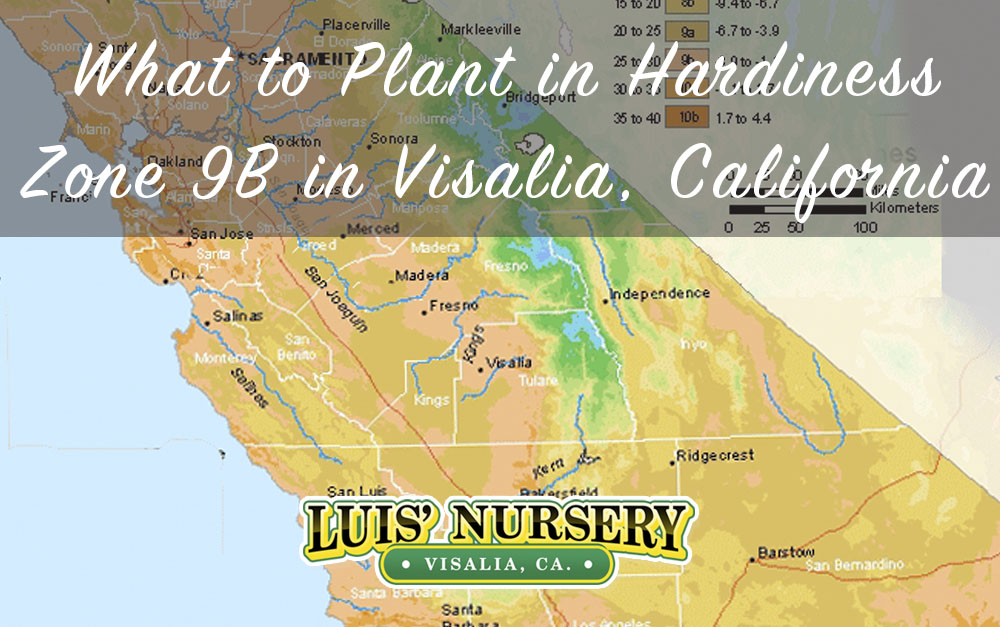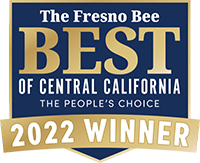In our last article, we discussed the importance of knowing your growing zone, otherwise known as your Hardiness zone. Visalia is located in Zone 9B. What does that mean to you? Any plant that you choose needs to survive your zone’s lowest temperatures. Knowing your first and last frost dates and the amount of expected rain in your growing zone is important for a successful garden. Some other important things to track are your soil quality, water schedule and sunlight needs.
If you have a micro-climate in your yard, you can play around a little and even push the limits to help you extend the growing season for certain plants. If you are feeling adventurous and want to grow something that is completely outside your zone, you can grow it as an annual instead and plan for it to mature in your growing season. You can also give the plants a leg up by creating your own micro-climate using garden fabric, greenhouses, and shade cloth.
Visalia is located in Zone 9B which is an awesome zone to live in due to our long growing seasons. The lowest average temperature is usually around 25 degrees. Since we do have those hard freezes, we’re able to grow food pretty much year-round! Our long summers with warmer temps also allow us to have multiple plantings of our warm weather crops. This is a great area to live in if you’d like to learn to grow a variety of foods.
What should you plant in Zone 9B?
Leafy Greens – These are great in raised beds or containers or as part of an edible garden.
Examples are Arugula, Collard Greens, Spinach, Kale, Lettuce
Fruits – Saving money and eating even more delicious tree ripened fruit is so satisfying. You will need to be patient as most fruit plants are perennial and take a few years to produce a good haul. They prefer a bit of warmth and will grow better during the warmer temps.
Examples are Blackberries, Watermelons, Cantaloupe, Strawberries, Plums, Pears, Oranges, Lemons, Figs, Grapes
Root Crops – Awesome in containers, or in a root cellar. Root crops love cold weather, and reward you with sweeter tastes.
Examples are Beets, Turnips, Carrots, Parsnips, Rutabagas, Onions, Radishes, Turnips, Sweet Potatoes
Herbs – Herbs are amazing companions to your fruits and veggies at the table. They are easy to grow in your garden, or in a raised bed or a container. Like fruit, herbs also prefer warmth for best production
Examples are Sage, Rosemary, Thyme and Parsley
Vegetables – Some like it hot, some like it cold
These are the vegetables that are best grown when it’s cooler:
Examples are Broccoli, Cabbage, Cauliflower, Celery, Brussel Sprouts, Winter Squash, Peas
These are the vegetables that are grown best when it’s warmer:
Examples are Asparagus, Okra, Tomatoes, Pumpkins, Eggplant, Summer Squash, Corn, Cucumbers, Beans, Bell Peppers
When planting for your zone, be sure to take into consideration that certain crops will need special care in where they are planted. As an example, asparagus, fruit trees, strawberries, blackberries, and grapes all have little things that you should research and note when planting.
Knowing that your favorite plant most likely won’t grow successfully in your area, and the workarounds don’t work, that can be heartbreaking, but in the end, you’ll save yourself time, money, and a headache by sticking to your zone. Once you’re aware of the best plants for your zone, you can plan a successful garden. We would be happy to help answer any questions relating to our zone or any of your planting needs!



